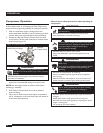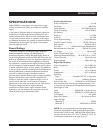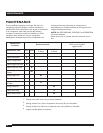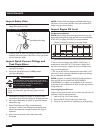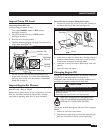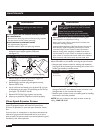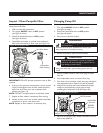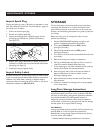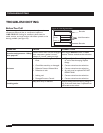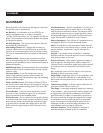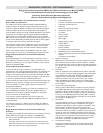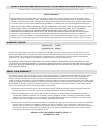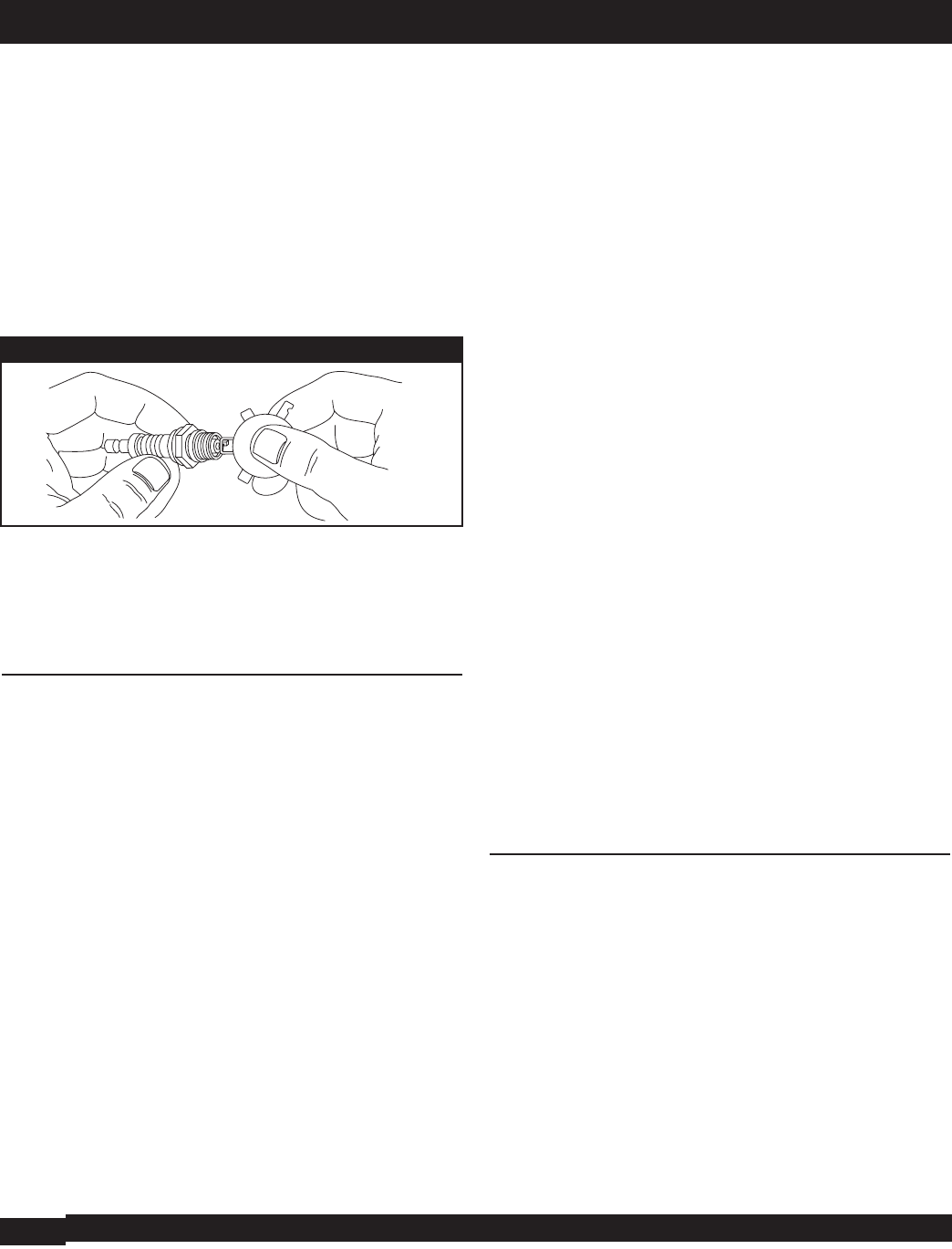
20
MAINTENANCE / STORAGE
Inspect Spark Plug
Change the spark plug every 100 hours of operation or once
each year, whichever comes first.This will help your engine to
start easier and run better.
1. Clean area around spark plug.
2. Remove and inspect spark plug.
3. Inspect electrode gap with wire feeler gauge and set
spark plug gap to 0.030 inch (0.76mm) if necessary
(see Figure 21).
4. Replace spark plug if electrodes are pitted, burned, or if
porcelain is cracked. Use the recommended replacement
spark plug (see Page 13).
5. Install spark plug and tighten firmly.
Inspect Safety Labels
As often as desired or at least yearly, inspect all labels applied
to the air compressor.All safety labels should be present and
readable. If any safety label is missing or illegible, obtain a
replacement from an authorized service center or call the air
compressor helpline at 1-800-743-4115.
STORAGE
The air compressor should be started at least once every
seven days and allowed to run at least 30 minutes. If this
cannot be done and you must store the unit for more than
30 days, use the following information as a guide to prepare it
for storage.
Before you store your air compressor, make sure you
perform the following:
1. Review MAINTENANCE beginning on page 14 and
perform scheduled maintenance as necessary.
2. Turn engine ON/OFF switch to OFF position
(see Figure 9 earlier).
3. Move Fuel Shutoff Valve lever to OFF position
(see Figure 8 earlier).
4. Turn Pressure Control knob counterclockwise until knob
turns freely.
5. Remove air hose(s), air tool(s), or accessories.
6. Pull ring on Safety Valve and drain air from air tanks to
reduce air pressure. Release Safety Valve ring.
7. Drain remaining air and water condensate from tanks by
opening Drain Valves fully counterclockwise.
8. Rock unit gently side to side or forward and back to
agitate condensate as it drains to obtain a more
thorough emptying action.
9. After condensate has been drained, close Drain Valves
fully clockwise.
10. Protect air hose(s) from damage (such as being stepped
on or driven over).
Long Term Storage Instructions
It is important to prevent gum deposits from forming in
essential fuel system parts, such as the carburetor, fuel filter,
fuel hose or tanks during storage.Also, experience indicates
that alcohol-blended fuels (called gasohol, ethanol or
methanol) can attract moisture, which leads to separation
and formation of acids during storage.Acidic fuel can damage
the fuel system of an engine while in storage.
Fuel Additive:
If using a fuel additive, fill the Fuel Tank with fresh fuel. If only
partially filled, air in the Fuel Tank will promote fuel
deterioration during storage. Engine and fuel can be stored
up to 24 months with additive.
• Add fuel additive following manufacturer’s instructions.
Figure 21 — Spark Plug



